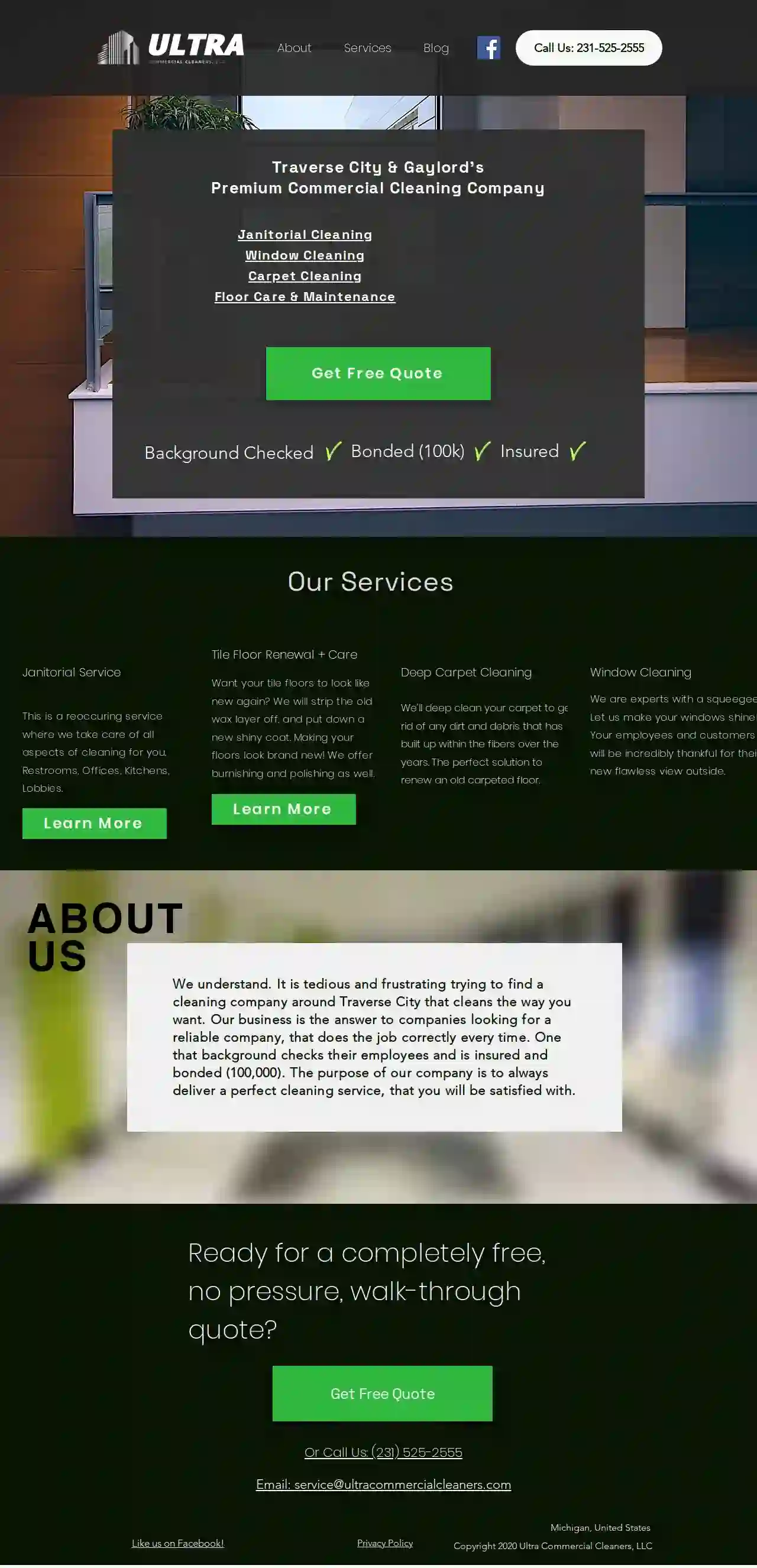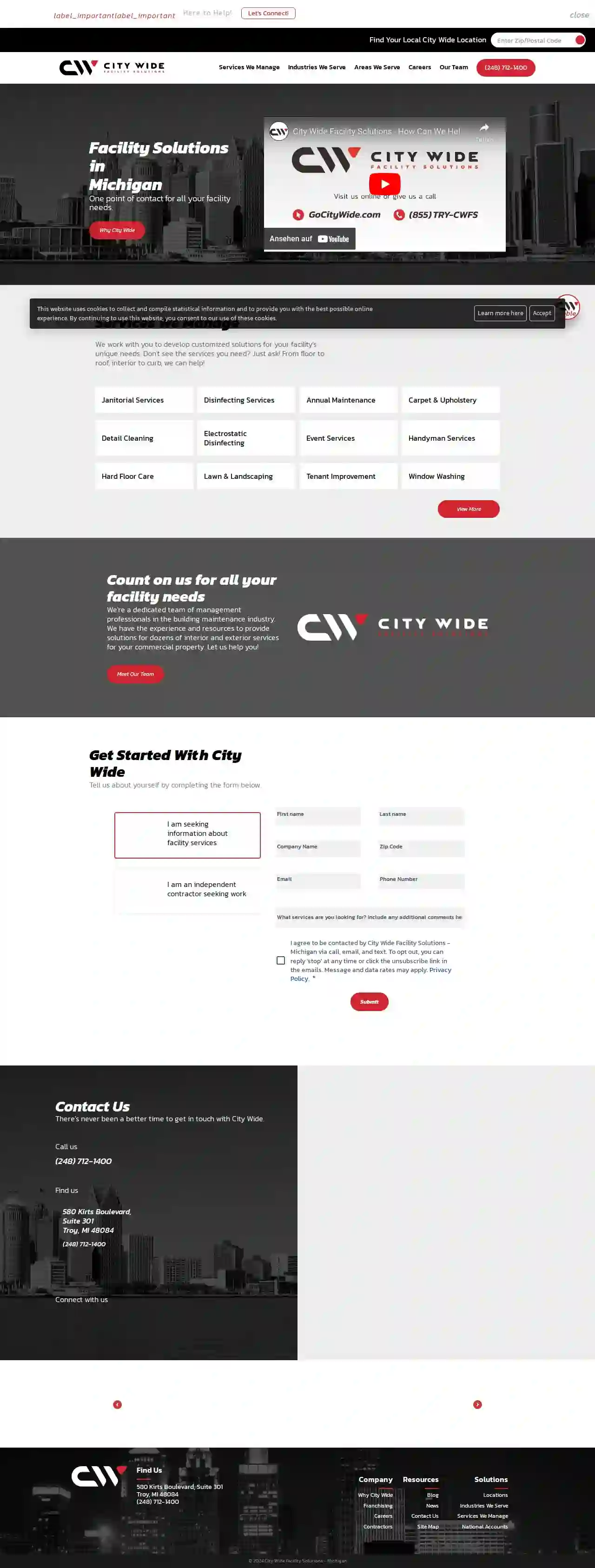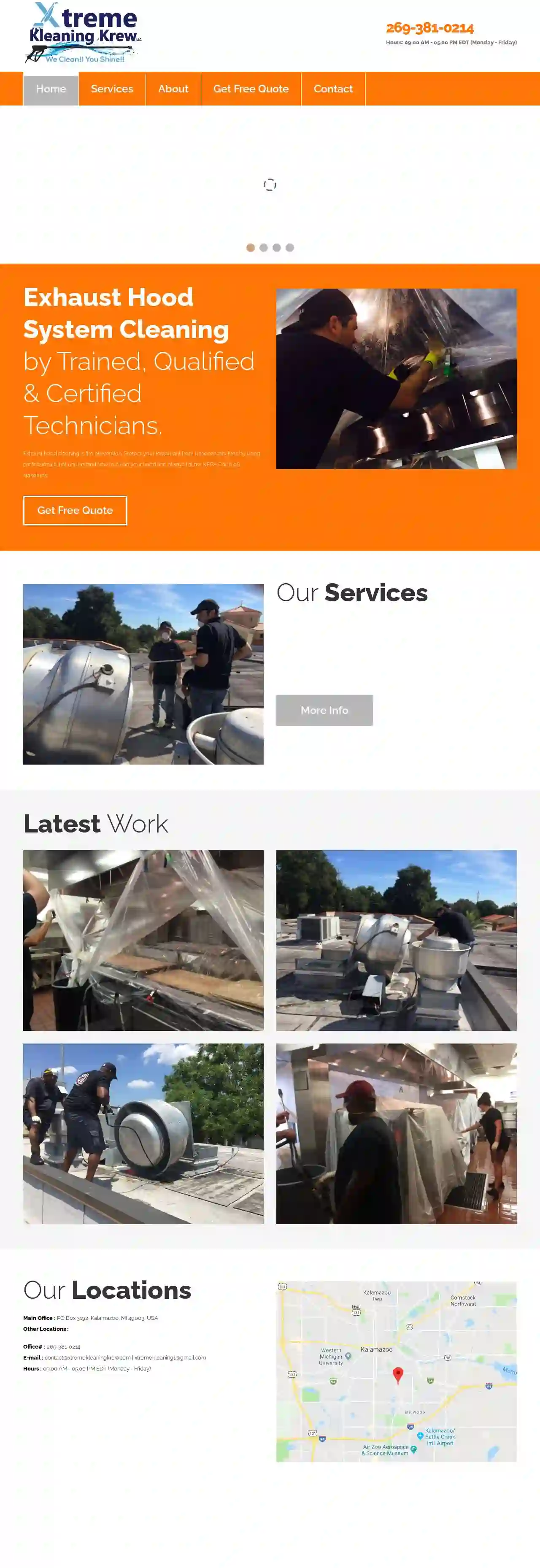Cleaning Services Hudsonville
Find the best Cleaning Services in Hudsonville
Get multiple Home Cleaning quotes for your project today! Compare profiles, reviews, accreditations, portfolio, etc... and choose the best service.

Clean Team Battle Creek
543 reviewsDetroit, US- Services
- Why Us?
- Gallery
Get Quote
Ultra Commercial Cleaners, LLC
58 reviewsDetroit, US- Services
- Why Us?
- Gallery
Get Quote
Prestigious Cleaning Services
123 Main St, Kalamazoo, MI, 49001, USPrestigious Cleaning Services LLC is a local and family-owned business that specializes in providing professional cleaning solutions for both residential and commercial properties. With over 10 years of experience in hygiene and sanitation practices, they offer a broad spectrum of services including business offices, post-construction, residential, medical offices, education, Airbnb/apartments, and industrial. They are passionate about ensuring the health and safety of their community and utilize effective cleaning methods and eco-friendly products. Their team is committed to providing exceptional cleaning solutions tailored to meet the specific needs of each client, ensuring a safe and healthy environment for clients, their families, and employees. They guarantee customer satisfaction and are transparent with their service and pricing.
- Services
- Why Us?
- Accreditations
- Our Team
- Testimonials
- Gallery
Get Quote
Autonomous Systems Commercial Cleaning Services
19255 W. Davison St., Detroit, 48223, USAutonomous Systems is a trusted partner for commercial cleaning, janitorial services, and floor care needs. Combining science with technology, they have developed a proven decontamination and virus suppression strategy. Their team includes experts in robotics, biomedical, and cleaning professionals, ensuring a safe and efficient service for clients. Autonomous Systems is committed to customer satisfaction, respect, accountability, openness, and enhancing the quality of life in the community.
- Services
- Why Us?
- Accreditations
- Our Team
- Testimonials
- Gallery
Get Quote
City Wide Facility Solutions - Michigan
4.210 reviewsDetroit, US- Services
- Why Us?
- Gallery
Get Quote
Detroit Cleaning Pro
4.98 reviews123 Main St, Detroit, 48201, USAt Detroit Cleaning Pro, we pride ourselves on providing top-notch cleaning services to our clients. Our team of experts has years of experience in the industry and is dedicated to delivering exceptional results. We use only the highest quality equipment and eco-friendly cleaning solutions to ensure a safe and healthy environment for our clients. Our mission is to provide a stress-free cleaning experience that exceeds our clients' expectations. We serve the Detroit area and surrounding communities, and we're committed to building long-term relationships with our clients. Our team is fully trained and equipped to handle any cleaning task, from one-time deep cleans to regular maintenance cleaning. We're proud to be a locally owned and operated business, and we're committed to giving back to our community. Contact us today to schedule your cleaning service and experience the Detroit Cleaning Pro difference.
- Services
- Why Us?
- Gallery
Get Quote
X-treme Kleaning Krew
4.48 reviewsPO Box 3192, Kalamazoo, 49003, USXtreme Kleaning Krew LLC is a leading provider of kitchen exhaust hood cleaning services. Our certified technicians are trained, qualified, and certified by the MFS Exhaust Hood Cleaning School to ensure that your entire exhaust system is cleaned in accordance with NFPA (National Fire Protection Association) code 96. Our mission is to be the best in our industry by giving you the very best exhaust hood cleaning service available. We strive to protect your investment like it was our own restaurant, and our office will schedule your cleanings on time so you are never late or non-compliant. Our services include exhaust hood system cleaning, hood filter weekly cleaning, power washing, and specialty cleaning. We utilize the best tools and equipment in the cleaning industry to provide detailed, thorough, and sanitary cleaning at a standard of excellence and quality to meet your needs and satisfaction.
- Services
- Why Us?
- Accreditations
- Gallery
Get Quote
Giant Janitorial Services
3.39 reviewsDetroit, US- Services
- Why Us?
- Gallery
Get Quote
Merry Maids of Muskegon
4.132 reviewsMuskegon, US- Services
- Why Us?
- Gallery
Get Quote
ServiceMaster Restore of Kalamazoo
4.8127 reviewsKalamazoo, US- Services
- Why Us?
- Gallery
Get Quote
Over 60,241+ Janitorial Businesses on our platform
Our janitorial contractors operate in Hudsonville & surrounding areas!
CleaningMatch has curated and vetted the Best Cleaning Services near Hudsonville. Find the most reliable contractor today.
Frequently Asked Questions About Cleaning Services
- Experience and a proven track record: Choose companies with a solid history of providing quality cleaning services.
- Positive customer reviews and testimonials: Check online reviews and ratings to gauge customer satisfaction.
- Licensed and insured professionals: Ensure the company has the necessary licenses and insurance to protect you from liability.
- Clear and transparent pricing: Obtain detailed quotes and compare prices from multiple companies.
- Good communication and responsiveness: Choose a company that communicates clearly, responds promptly, and addresses your concerns.
- Weekly: Suitable for busy households with children or pets, ensuring a consistently clean and healthy environment.
- Bi-weekly: A good option for smaller households or those who maintain a relatively clean home.
- Monthly: May be sufficient for individuals or couples who live a minimalist lifestyle.
- Quarterly or Annually: Can be suitable for deep cleaning or seasonal cleaning tasks.
- Regular dusting: Dust frequently using microfiber cloths or a duster. Pay attention to surfaces that attract dust, such as shelves, electronics, and furniture.
- Vacuuming: Vacuum carpets and rugs regularly using a vacuum cleaner with a HEPA filter to trap dust mites and allergens.
- Air Purifier: Consider using an air purifier to remove dust particles and allergens from the air.
- Reduce Clutter: Clutter provides more surfaces for dust to settle. Declutter regularly to minimize dust traps.
- Window Treatments: Wash or vacuum window treatments, such as curtains or blinds, regularly to remove dust buildup.
- Bedding: Wash bedding, including sheets, pillowcases, and blankets, weekly in hot water to remove dust mites.
- Doormats: Place doormats at entrances to trap dirt and dust from shoes before they enter your home.
- Communicate clearly: Before the cleaning, communicate your expectations and any specific cleaning requirements. Provide a list of areas you want them to focus on or any tasks you want them to prioritize.
- Provide access: Ensure the cleaners have access to all the areas that need cleaning. Unlock doors, clear clutter, and provide any necessary instructions.
- Walk through after cleaning: Once the cleaning is complete, do a walk-through with the cleaners to inspect their work. Address any concerns or areas that need attention.
- Provide feedback: Give the cleaning service feedback on their performance. Let them know what you were happy with and any areas they can improve.
- Build a relationship: Establish a good relationship with the cleaning service by communicating openly, treating them with respect, and providing clear instructions.
How do I find a good cleaning service?
Utilize online directories like CleaningMatch to find and compare qualified cleaning services in your area.
How often should I have my house cleaned?
You can adjust the frequency based on your needs and budget. Some people opt for weekly cleaning for high-traffic areas like kitchens and bathrooms and bi-weekly cleaning for the rest of the house.
How do I prevent dust from accumulating in my home?
By implementing these preventive measures, you can significantly reduce dust accumulation and maintain a cleaner and healthier home.
How can I make sure my cleaning service does a good job?
Clear communication, a thorough inspection, and constructive feedback are key to getting the best results from your cleaning service.
How do I find a good cleaning service?
- Experience and a proven track record: Choose companies with a solid history of providing quality cleaning services.
- Positive customer reviews and testimonials: Check online reviews and ratings to gauge customer satisfaction.
- Licensed and insured professionals: Ensure the company has the necessary licenses and insurance to protect you from liability.
- Clear and transparent pricing: Obtain detailed quotes and compare prices from multiple companies.
- Good communication and responsiveness: Choose a company that communicates clearly, responds promptly, and addresses your concerns.
Utilize online directories like CleaningMatch to find and compare qualified cleaning services in your area.
How often should I have my house cleaned?
- Weekly: Suitable for busy households with children or pets, ensuring a consistently clean and healthy environment.
- Bi-weekly: A good option for smaller households or those who maintain a relatively clean home.
- Monthly: May be sufficient for individuals or couples who live a minimalist lifestyle.
- Quarterly or Annually: Can be suitable for deep cleaning or seasonal cleaning tasks.
You can adjust the frequency based on your needs and budget. Some people opt for weekly cleaning for high-traffic areas like kitchens and bathrooms and bi-weekly cleaning for the rest of the house.
How do I prevent dust from accumulating in my home?
- Regular dusting: Dust frequently using microfiber cloths or a duster. Pay attention to surfaces that attract dust, such as shelves, electronics, and furniture.
- Vacuuming: Vacuum carpets and rugs regularly using a vacuum cleaner with a HEPA filter to trap dust mites and allergens.
- Air Purifier: Consider using an air purifier to remove dust particles and allergens from the air.
- Reduce Clutter: Clutter provides more surfaces for dust to settle. Declutter regularly to minimize dust traps.
- Window Treatments: Wash or vacuum window treatments, such as curtains or blinds, regularly to remove dust buildup.
- Bedding: Wash bedding, including sheets, pillowcases, and blankets, weekly in hot water to remove dust mites.
- Doormats: Place doormats at entrances to trap dirt and dust from shoes before they enter your home.
By implementing these preventive measures, you can significantly reduce dust accumulation and maintain a cleaner and healthier home.
How can I make sure my cleaning service does a good job?
- Communicate clearly: Before the cleaning, communicate your expectations and any specific cleaning requirements. Provide a list of areas you want them to focus on or any tasks you want them to prioritize.
- Provide access: Ensure the cleaners have access to all the areas that need cleaning. Unlock doors, clear clutter, and provide any necessary instructions.
- Walk through after cleaning: Once the cleaning is complete, do a walk-through with the cleaners to inspect their work. Address any concerns or areas that need attention.
- Provide feedback: Give the cleaning service feedback on their performance. Let them know what you were happy with and any areas they can improve.
- Build a relationship: Establish a good relationship with the cleaning service by communicating openly, treating them with respect, and providing clear instructions.
Clear communication, a thorough inspection, and constructive feedback are key to getting the best results from your cleaning service.